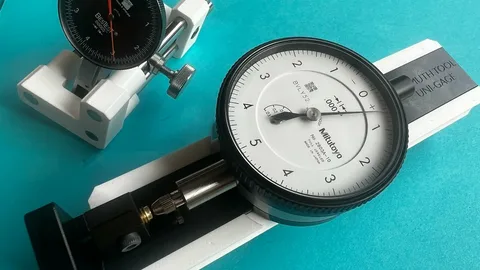In the fast-paced world of manufacturing, precision and consistency are critical for maintaining product quality and reducing production costs. This is where custom quality control gauges come into play. Unlike standard gauges, which follow universal dimensions and tolerances, custom gauges are designed to meet specific requirements for a unique product or process. These specialized tools help manufacturers ensure that every part produced adheres to exact specifications, reducing the likelihood of defects and costly recalls.
By designing custom gauges tailored to your production needs, you can streamline inspection processes and enhance operational efficiency. Custom gauges allow for rapid measurements, eliminating the guesswork and reducing the time spent on manual verification. Furthermore, they significantly minimize human error, ensuring that every measurement is accurate and consistent, which is crucial for maintaining your brand’s reputation in competitive markets.
Understanding the Role of Custom Quality Control Gauges
Before diving into the design process, it’s essential to understand why custom quality control gauges are vital for modern manufacturing. These gauges are specialized inspection tools used to verify whether parts meet predefined tolerances during or after production. They serve as a checkpoint to maintain quality standards, ensuring that components fit and function properly when assembled.
Custom gauges are especially important in industries where high precision is non-negotiable, such as automotive, aerospace, and medical device manufacturing. Unlike general-purpose measurement tools, these gauges are tailored for specific components, reducing inspection time while increasing accuracy. This customization not only speeds up production but also guarantees compliance with strict regulatory standards, minimizing the risk of production delays or product failures.
Key Factors to Consider When Designing Custom Quality Control Gauges
Designing custom quality control gauges requires a comprehensive understanding of both the part being inspected and the production environment. The first factor to consider is the type of gauge needed—whether it’s a plug gauge, ring gauge, snap gauge, or a more complex fixture. The choice depends on the part geometry and tolerance requirements. For example, plug gauges are ideal for checking internal diameters, while snap gauges verify external dimensions quickly and accurately.
Another crucial consideration is material selection. The material of the gauge must withstand wear and maintain accuracy over time. Hardened steel, carbide, and ceramic are commonly used due to their durability and resistance to deformation. Additionally, consider incorporating ergonomic features into the design to make handling easier for operators. A well-thought-out design will not only improve efficiency but also extend the lifespan of the gauge, providing long-term cost savings.
Steps to Design and Develop Effective Custom Gauges
The design process for custom quality control gauges begins with a thorough analysis of the part specifications, including dimensions, tolerances, and geometric features. Collaborating with the design and engineering teams ensures that all functional and quality requirements are accounted for. Using advanced CAD software, designers can create 3D models of the gauge to visualize its performance and identify potential design flaws before manufacturing begins.
After the initial design is completed, prototyping is an essential step. A prototype allows for real-world testing to confirm that the gauge accurately measures the intended features and withstands operational conditions. Feedback from quality control teams during this stage is invaluable for refining the final design. Once the prototype meets all performance expectations, the gauge is manufactured using precision machining processes to maintain tight tolerances and ensure reliability.
Incorporating Advanced Technologies for Maximum Efficiency
Modern technology has revolutionized the way custom quality control gauges are designed and manufactured. Incorporating technologies such as Computer-Aided Design (CAD) and Computer-Aided Manufacturing (CAM) ensures that every detail of the gauge is optimized for accuracy and ease of use. Additionally, Coordinate Measuring Machines (CMM) can verify the accuracy of the gauges during production, ensuring compliance with the highest quality standards.
In recent years, additive manufacturing, or 3D printing, has emerged as a cost-effective method for producing gauge prototypes and even final components for certain applications. This technology enables rapid prototyping, significantly reducing lead times and costs associated with traditional manufacturing methods. Furthermore, integrating digital measurement systems into custom gauges allows real-time data collection, which supports predictive maintenance and enhances overall quality control efficiency.
Best Practices for Maintaining and Calibrating Custom Gauges
Designing custom quality control gauges is only part of the equation—proper maintenance and calibration are essential for sustaining their accuracy over time. Regular calibration ensures that the gauge continues to measure within its specified tolerances. Calibration intervals depend on usage frequency and the operational environment, but as a rule of thumb, gauges should be calibrated at least once a year by certified professionals.
In addition to calibration, routine maintenance such as cleaning and proper storage is vital to prevent wear and contamination. Using protective cases and storing gauges in climate-controlled environments can significantly extend their service life. Training operators on proper handling techniques is also critical to avoid accidental damage. By following these best practices, manufacturers can ensure that their custom gauges remain reliable and continue to deliver maximum efficiency throughout their lifecycle.
Conclusion
Designing custom quality control gauges for maximum efficiency involves more than just creating a measurement tool—it requires careful planning, advanced engineering, and a commitment to quality. By understanding the role of these gauges, considering key design factors, incorporating advanced technologies, and implementing proper maintenance practices, manufacturers can significantly improve their production processes. The result is greater accuracy, reduced waste, and enhanced product quality—key elements for success in any competitive industry.











Leave a Reply